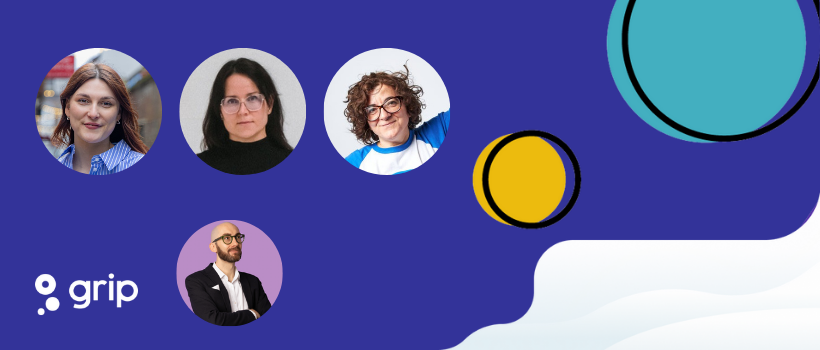One key to successfully marketing your virtual event is using peer-to-peer marketing, or influencer marketing, to cross-promote your content.
As event professionals scramble to transform their in-person programs to successful virtual event experiences, they are faced with shorter timelines and greater pressure to increase their brand’s reach and event attendance. One of the benefits of offering a virtual experience is you are able to reach and include far more participants, but with so many new technologies to learn and a shorter timeline to plan and market your event, it’s critical you leverage the most powerful event marketing secret weapon you have: your event influencers. Your best promoters for a virtual conference are the people who have skin in the game, including your speakers, sponsors, exhibitors, and maybe even your most engaged, influential community members, volunteers, or customers.
1. Get to Know the Power of Influencer Event Marketing.
Influencer marketing, built on the foundation of people-to-people marketing, is proving to be one of the most powerful promotional tools for meeting and event planners across all industries, from fashion to e-commerce and beyond. Meeting planners are purposely approaching their community’s influencers that have niche followings because they are highly trusted and have direct ties to high-quality leads. Dahlia El Gazzar, Tech Evangelist at DAHLIA+ Agency, believes meeting planners are facing new virtual engagement challenges, saying, “Event planners are competing against a limited attention span more than ever before. Now is the time to think creatively and act efficiently. Use peer-to-peer marketing, or use influencer marketing as you have never used before, leveraging resources you already have in your network.” Giving event participants, speakers, and sponsors a megaphone allows your most engaged members and advocates an opportunity to share their passion for their community while promoting their own brand and presence in the industry. The budget associated with this strategy? Next to nothing.
2. Identify Your Best Virtual Event Influencers.
You may be wondering how to determine who your influencers are. You may be tempted to solicit a high-profile celebrity to help promote your event. Before you write that check, it’s important to understand the differences between and impact of “macro-influencers” versus “micro-influencers”. The best influencers for your event are the people who are actively involved. Who are your most popular and influential volunteers, speakers, sponsors and attendees? To find them, you need to know how to listen. Search for hashtags relevant to your field and identify which people are using them the most. Remember to focus on hashtags that show a high level of engagement, which may not necessarily be the ones with the most people chiming in. Beyond hashtags, industry-specific LinkedIn and Facebook Groups will give you an idea of who is active, and who routinely gets engagement. Besides determining if a given person seems like they have influence in their circles, social listening allows you to see how they present themselves and if that aligns with your event’s values. Your event’s influencers can elicit fantastic engagement from a cohort of highly relevant people that have earned their trust.
3. Make it Easy for Influencers to Market Your Event – and Get Creative!

Event influencers can be weaved seamlessly into your marketing strategy by providing them with an event promotion toolkit that includes branded, customizable templates they can personalize and share with their own networks via email and on key social media channels like LinkedIn or Twitter. However, engaging your event influencers doesn’t have to be limited to just social media posts and email campaigns. Get your creative juices flowing and work with your influencers in new, exciting ways, like co-creating event presentations and sessions, producing exciting video testimonials or event teasers, and more fun creative ideas you come up with. You can even take it one step further and provide each influencer with their own personalized landing page, where they can customize the information displayed and invite people from their own network to register for the event. Why is this important? It allows you to expand your reach into untapped networks.
4. Rethink and Repurpose Your Influencer Content.
Any content that you create with your influencers, especially attention-grabbing videos, can be broken down into bite-size content that can be shared on social media and in emails to spice up and diversify your overall event marketing strategy.
Wanderlust Festival, which holds wellness events all over the world, does a great job of leveraging influencers to promote the events to their target attendees – primarily millennials – on YouTube and other social media channels. They have created a series of videos called Wanderlust Postcards, which are short one-minute videos, each featuring a different micro-influencer. What’s really brilliant is that these videos are designed to be shared. Each video provides 30 seconds of content that Wanderlust attendees love to share, including words of inspiration, mindfulness meditations, and more. Creating content that your audience is excited to post on their own channels is a great way to lengthen the life of your marketing campaign and grow the overall reach of your event. The annual DIG SOUTH Tech Summit leverages LinkedIn to feature industry thought leaders, which are mostly event speakers and high-profile sponsors. They repurpose their event influencer content and keep the virtual conversation going all year long, which allows their target audience to stay up-to-date with the latest innovations in technology, trends, and of course, DIG SOUTH event updates.
5. Leveraging Your Influencers’ Networks Will Grow Your Virtual Event and Save You Time.
Being industry thought-leaders and game-changers, your event’s influencers are second to none: they have the reach, resonance, and credibility needed to amplify your event marketing and should be playing an active role in this. Global Meetings Industry Day (GMID) Goes Virtual 2020, a grassroots event planned as an alternative way for event professionals from around the globe to come together and raise the collective voice of the meetings and hospitality community, leveraged influencer marketing to expedite their event reach and attendance. snöball, the event influencer marketing technology operating behind the scenes, generated 59% of the total attendance and nearly 25,000 event website page views over the span of just two weeks.
Anh Nguyen, Principal and Founder of Spark Event Management and creator of the global virtual event, explains why she chose to utilize event influencer marketing technology, saying,
“We leveraged the snöball platform to promote GMID Goes Virtual because we knew we needed to reach a wide audience in a short period of time… we needed to sign up 15,000 people in less than two weeks and without the assistance from the snöball team, we would never have accomplished our goal.”

By having event participants become your event marketing partners, you can tap into their widespread influence and grow your virtual event over drastically shortened periods of time.
Bottom Line
Transitioning from in-person programs to a successful virtual event experience comes with shorter timelines and greater pressure to increase your brand’s reach and event attendance. It’s critical that you leverage the most powerful event marketing secret weapon you have: your own event influencers. Snöball makes it easy to do so, book a no-obligation demo, and learn how!




